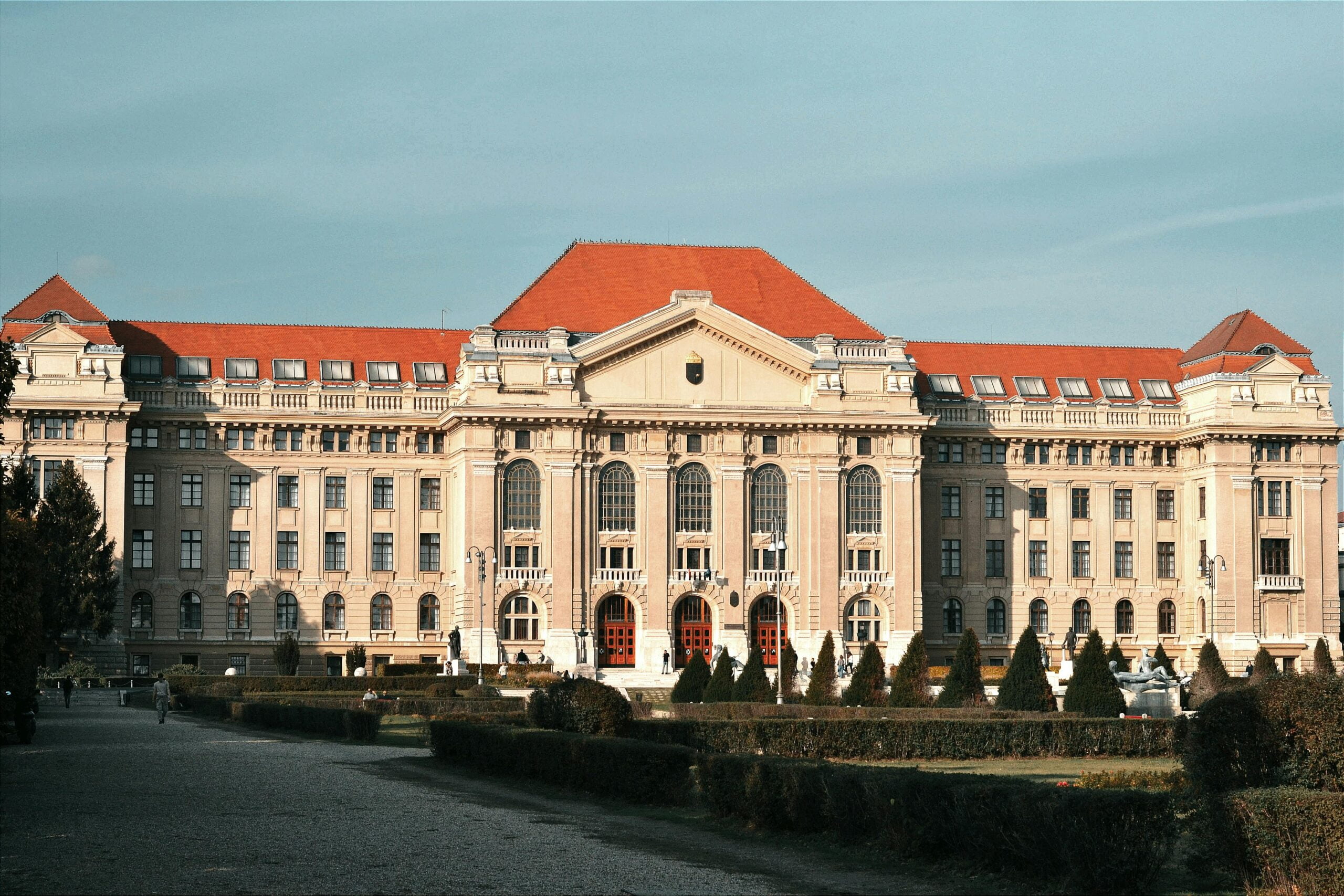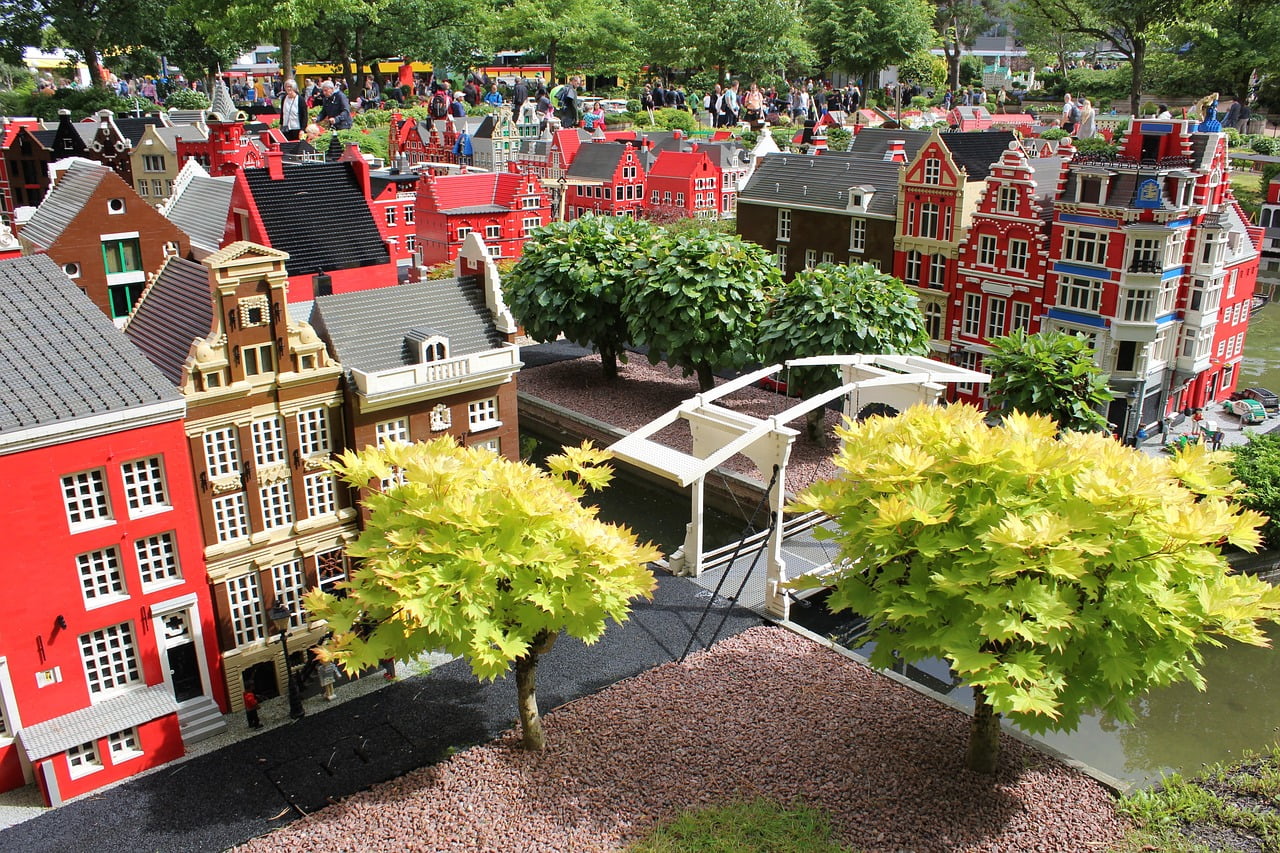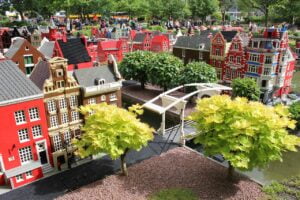What is an arch, and how is it used in architecture?
An arch is a vertical curved structure that spans through an elevated space that may or may not support the weight above it. It uses a curve to span a space between two points.
There are various kind of arches that differentiate according to shape, no. center, material, and others.
Type of Arches used in architecture
Classification of Arches based on :-
- Shape
- Number of Centre’s
- Materials of construction
Type of Arches based on Shape
Flat Arch
Acts like a lintel, when it provided over the opening.
- Joints radiated to the centre.
- Skewback angle is 60 degrees.
- For the flat arch, the intrados is flat and it acts as a base of an equilateral triangle which was formed by the horizontal angle of 60° by skewbacks.
- Even though the intrados is flat but it is given that a slight rise of camber of about 10 to 15 mm per meter width of the opening is allowed for small settlements.
- Extrados is also horizontal and flat. These flat arches are generally used for light loads and span up to 1500 mm (60 inches).
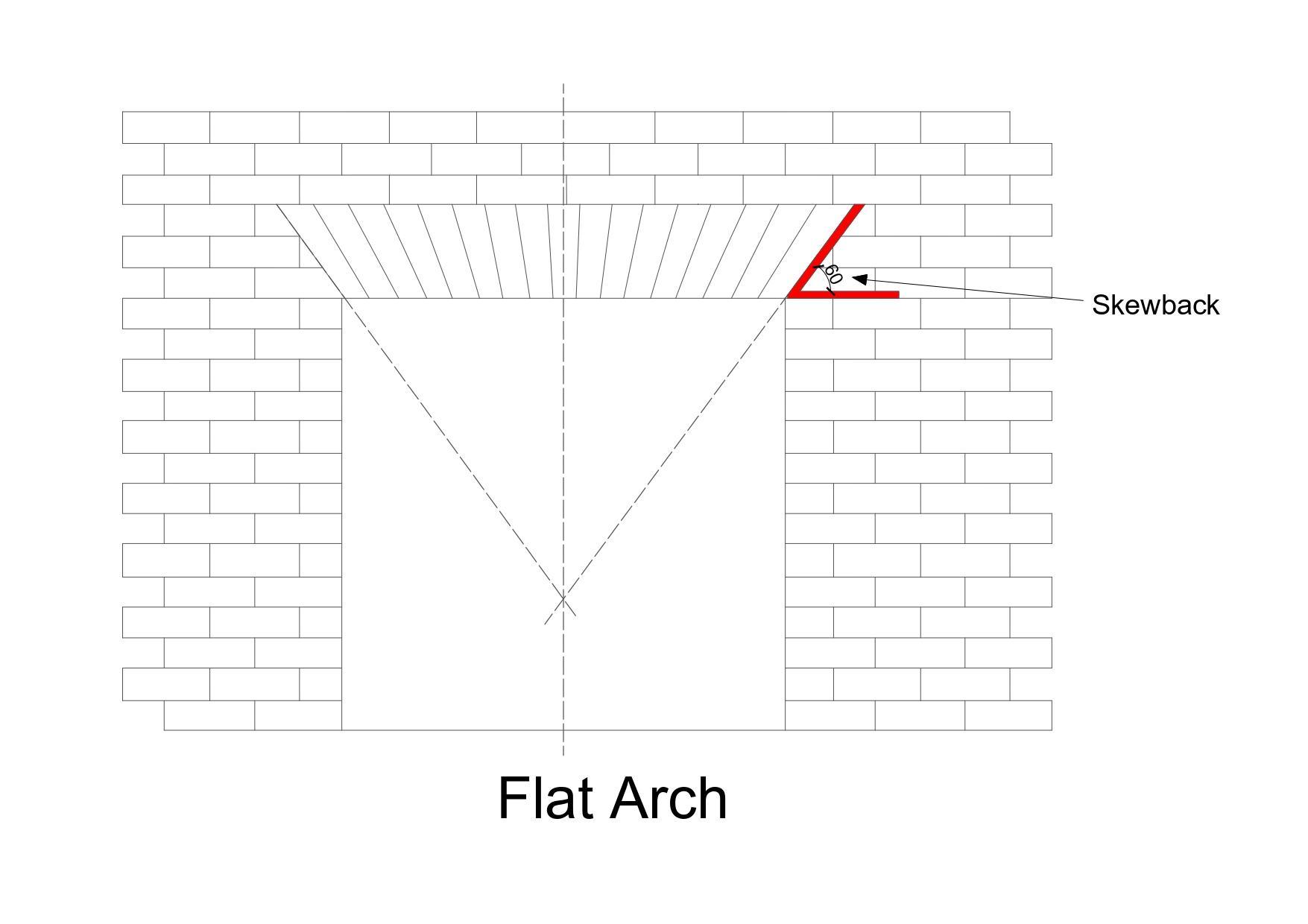
Segmental Arch
- Also known as scheme arch.
- It is a type of arch with a circular arc of fewer than 180 degrees.
- In fact, It is one of the strongest arches because it can resist thrust.
- This is the basic type of arch used for buildings in which the Centre of the arch lies below the springing line.
- In the segmental arch, the thrust is Transferred in an inclined direction to the abutment.
- Segmental in shape and provided over the openings .
- Joints radiate from the centre of the arch, which lies below the springing line.
- Provided over the lintel.
- It is commonly used over doorways, fireplaces, and windows.

Semi-Circular Arch
- Also known as the Roman arch.
- The shape of the arch curve looks like a semi-circle.
- The centre of the arch lies on the springing line.
- Thrust is transferred vertically as skewback is horizontal.

Horse Shoe Arch
- Also known as the Moorish arch and the keyhole arch.
- Horse Shoe Arch is in the shape of a horseshoe which curves more than a semi-circle. This is generally considered for architectural provisions.
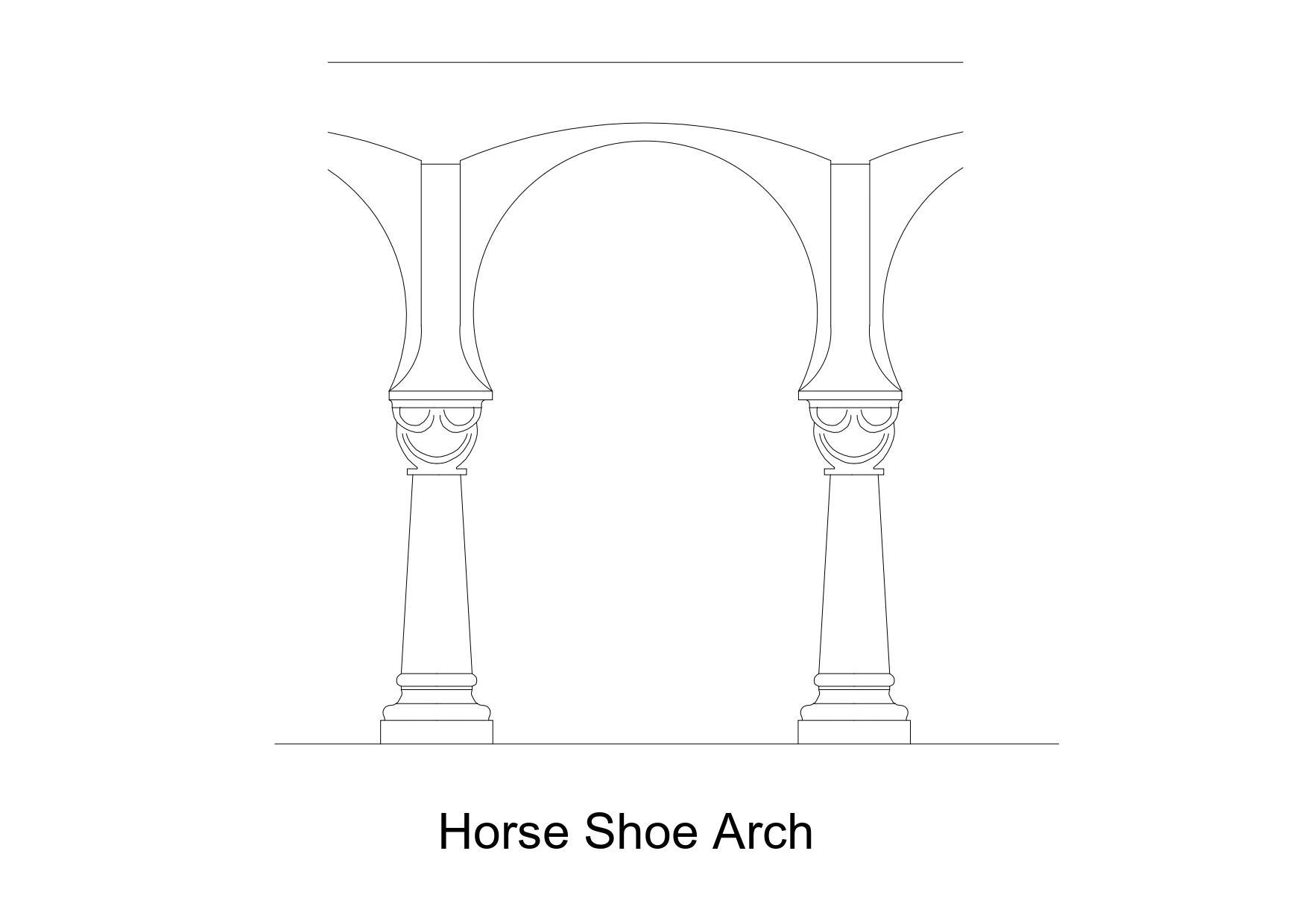
Pointed Arch
- Also known as an ogival arch, or Gothic arch.
- It first appeared in Indian and Islamic architecture.
- In this type of arch two arcs of circles are met at the apex hence triangle is formed. This may be either isosceles or equilateral
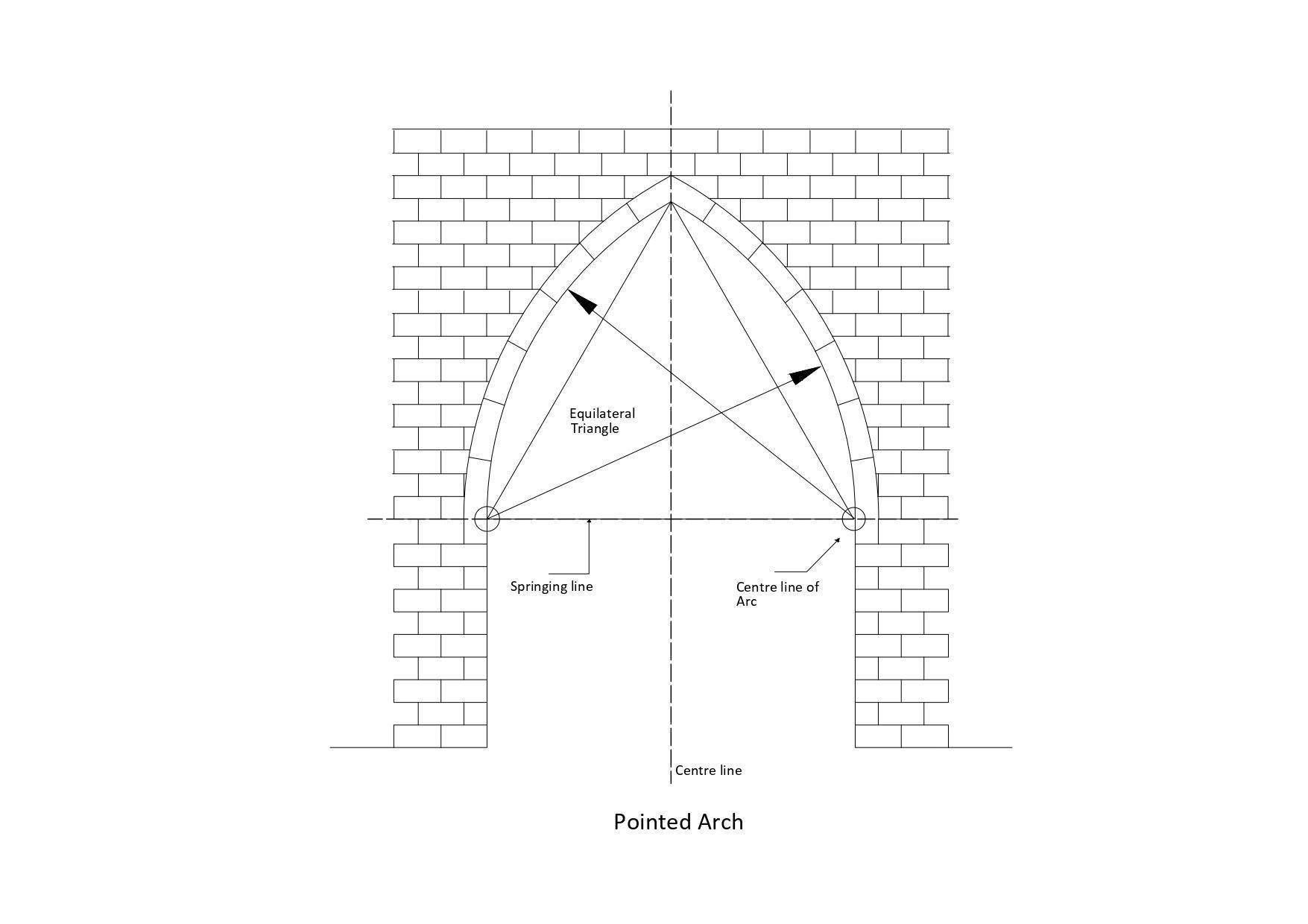
Venetian Arch
- Usually a pointed arch with a band wider at the peak than at the spring.
- Its crown is deeper than springing.
- It contains four centres, all located on the springing line.

Florentine Arch
- A semicircular arch having its extrados struck from a higher point than its intrados so that the length of the voussoirs is longer nearer the top of the arch.
- Intrados of the arch is in the shape of semi-circle and rest of the arch is similar to Venetian arch.
- It has three centers, all located on the springing line.
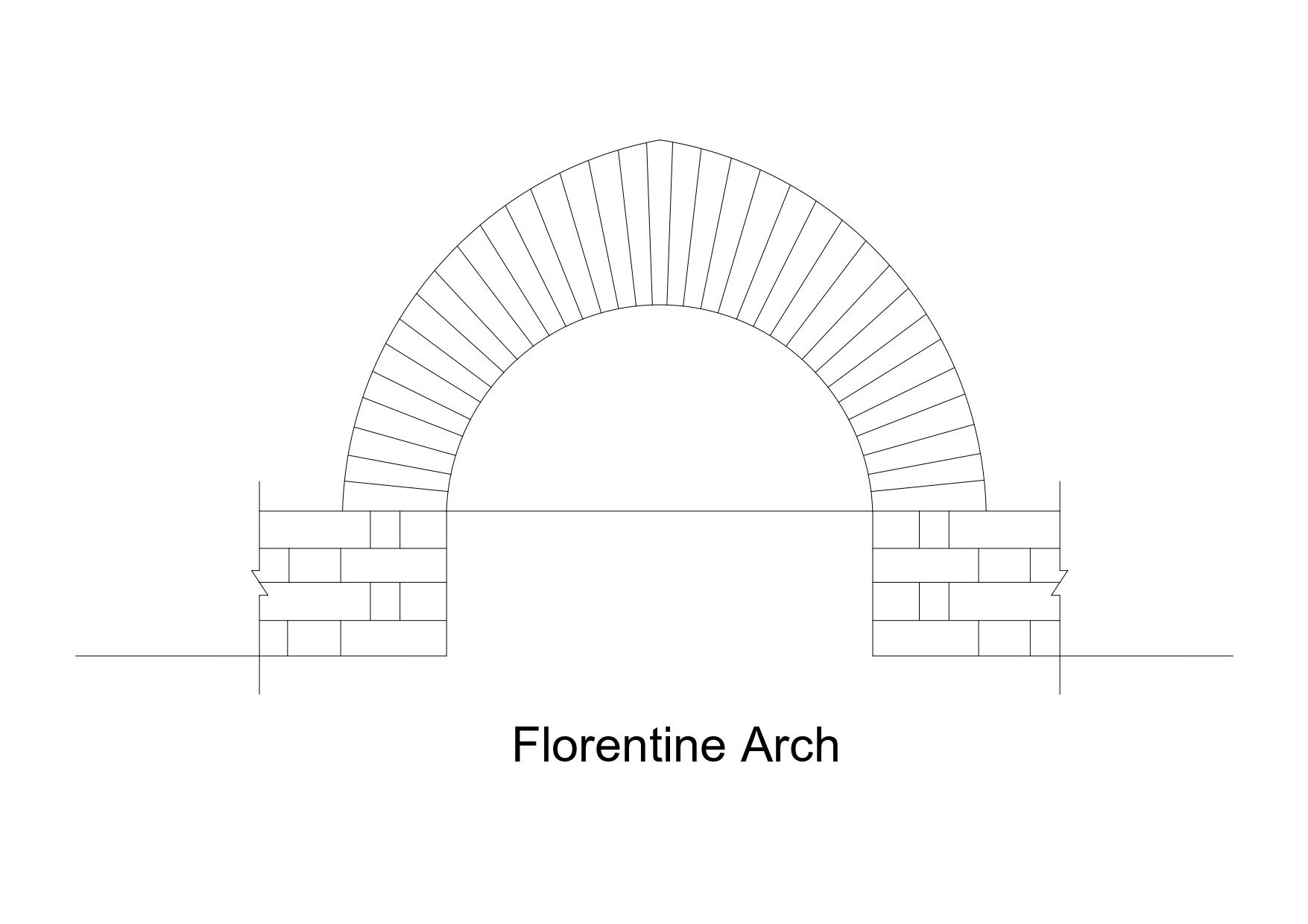
Relieving Arch
- Also known as Discharging arch.
- It is constructed above a flat arch or on a wooden lintel to provide greater strength. In the case of relieving arch, we can replace the decayed wooden lintel easily without disturbing the stability of the structure. The ends of this arch should be carried sufficiently into the abutments.
- Relieving the load of masonry over the lintel.

Stilted Arch
- Stilted Arch consists of a semi-circular arch with two vertical portions at the springing.
- Centre of arch lies on the horizontal line through the tops of vertical portions.
- A stilted arch is one in which the curve of the arch, supported, as it were, on stilts, springs from the vertical at a point at a level higher than that of the impost which carries the thrust of the arch.

Semi-Elliptical Arch
- Also known as Basket-handle Arch.
- An arch whose intrados is half an ellipse.
- It has three or five Centers.

Type of Arches based on Number of Centres
One-centered Arches
- This type of arch have only one centre.
- Segmental, semi-circular, flat arches, horse-shoe arches and stilted arches come under this category.
- Sometime, a perfectly circular arch known as a bull’s eye arch, is provided for the circular window.
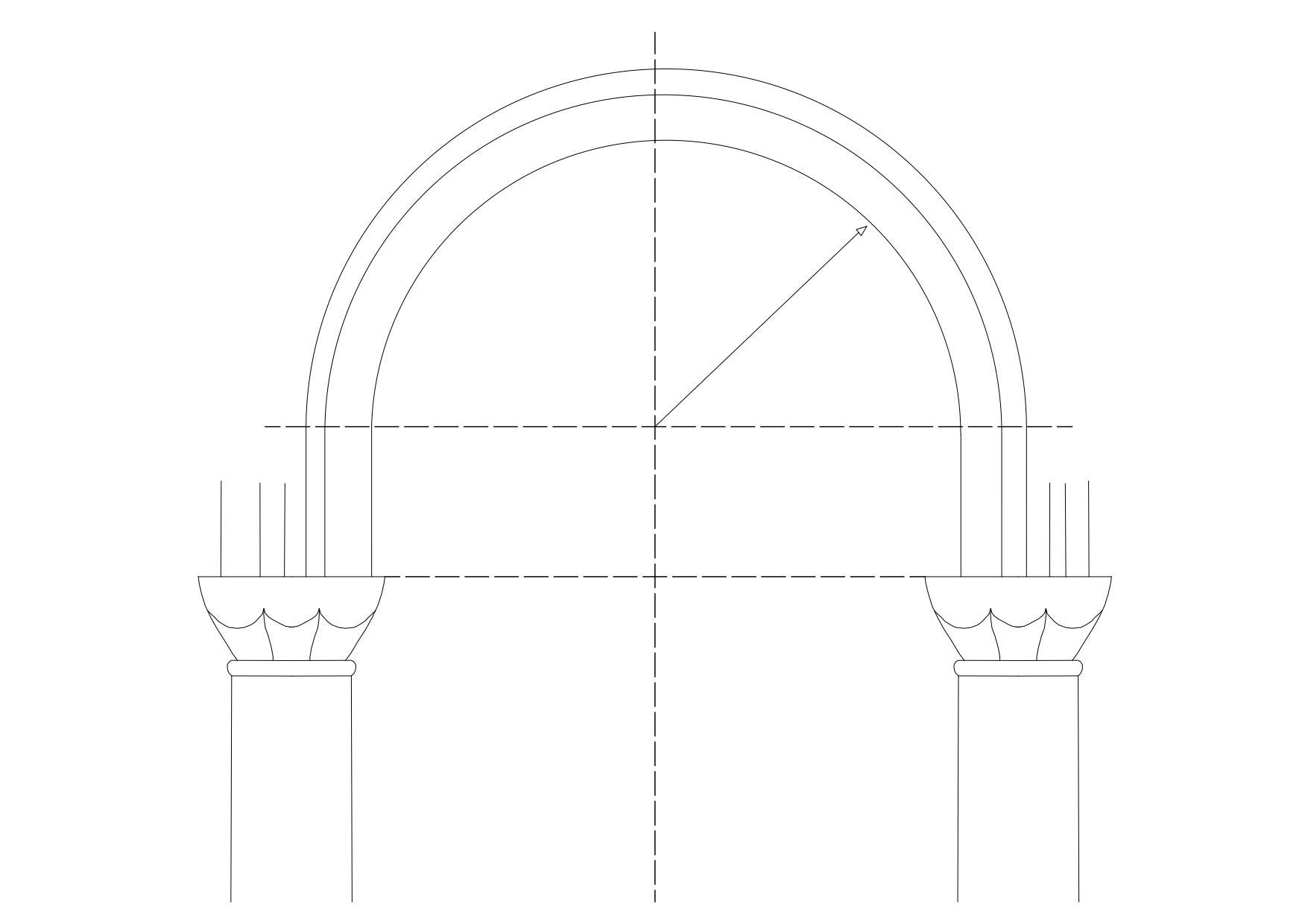
Two Centered Arches
- An arch whose intrados curve is described from two centres.
- Pointed, gothic, lancet and semi-elliptical arches generally come under this type.

Three Centered Arches
- A three-centred arch is an elliptical approximation using three tangent arcs. A true ellipse is a shape created by making a diagonal section cut through a cone or cylinder. The ellipse has two focal points and a constantly changing arc radius.
- Semi elliptical and Florentine arches are generally having three centers
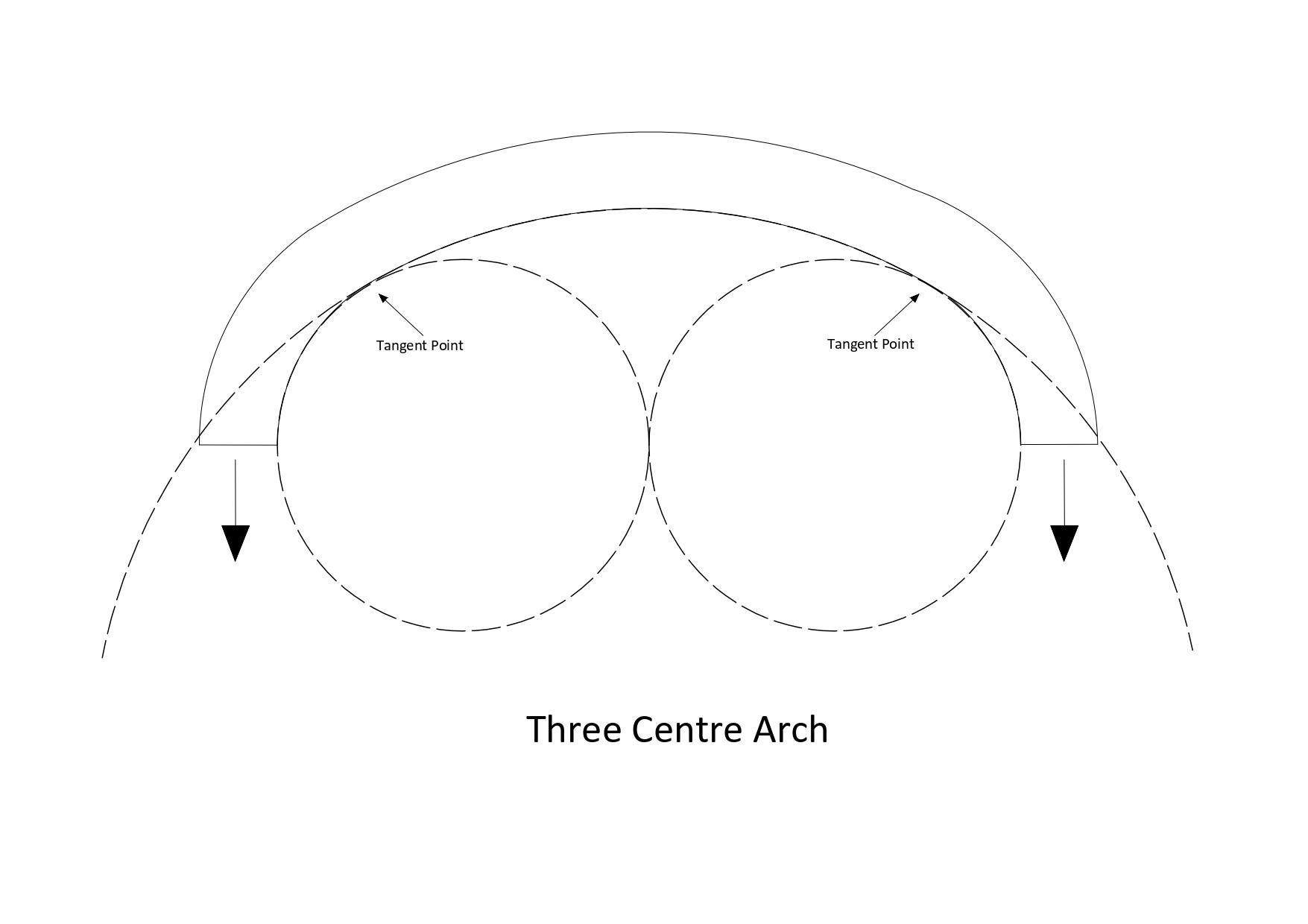
Four Centered Arches
Venetian arch is a typical example for four-centered arch. Tudor arch is also having four centers.
- A four-centred arch is a low, wide type of arch with a pointed apex.
- It has four centres.
- Venetian arch and Tudor arch is a typical examples of this type of arches.
- It is widely used in Islamic architecture.
- This type of arch uses space efficiently and decoratively when used for doorways.
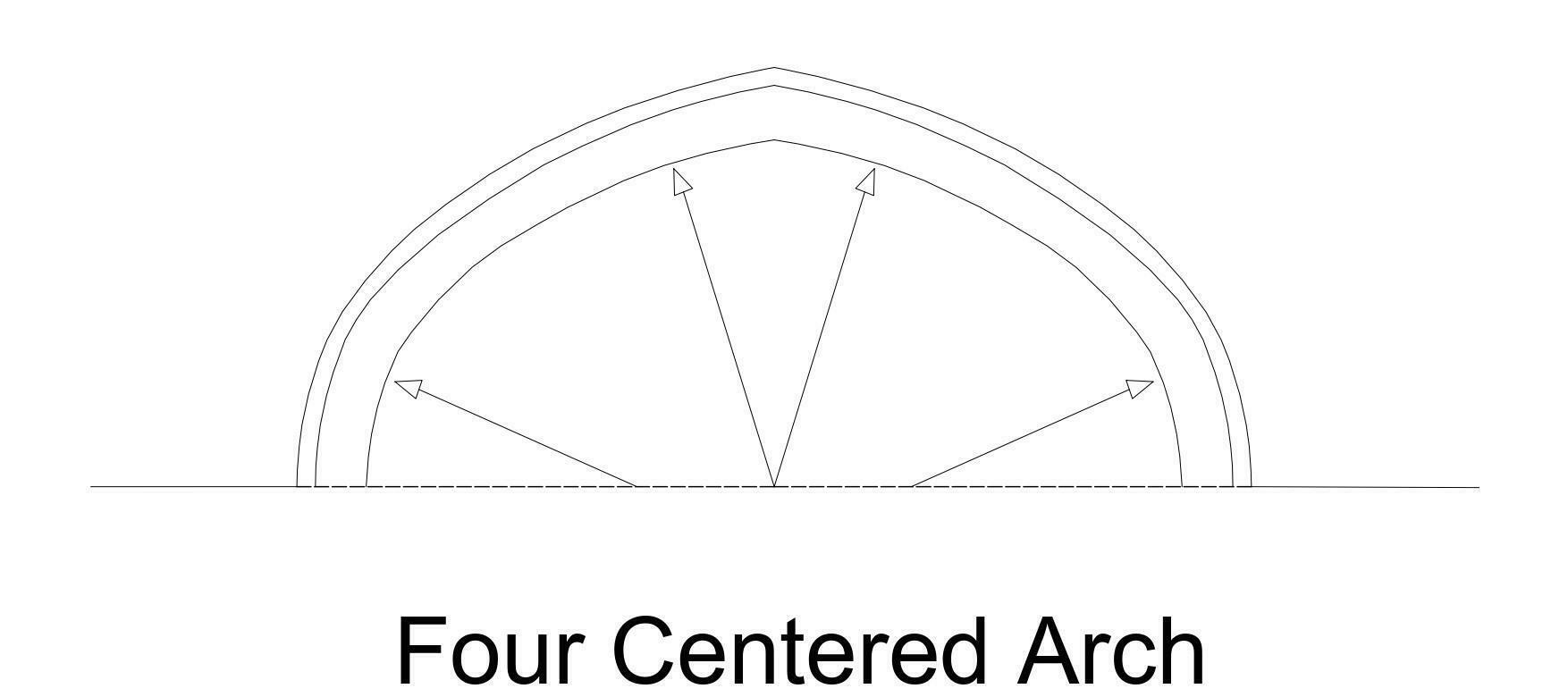
Five centered arches
A good semi-elliptical shape arch contains five centres.
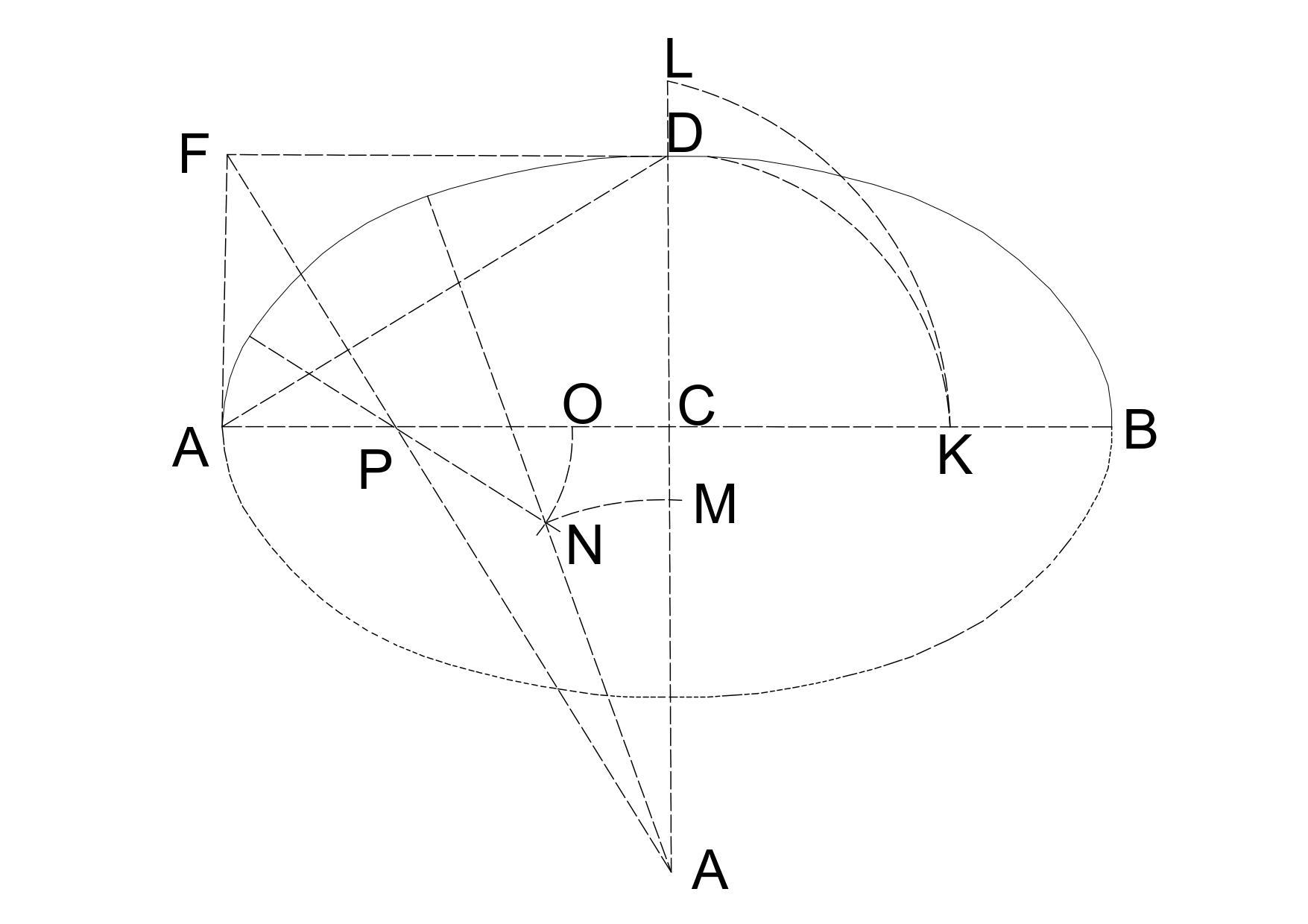
Type of Arches based on Materials
Stone Arches
Rubble arches
- Made of rubble stones, which are hammer dressed, roughly to the shape and size of voussoirs of the arch and fixed in cement mortar.
- These arches are used for a small span of up to 1000 mm (40 inches).
- Two courses of rings in header and stretcher form.
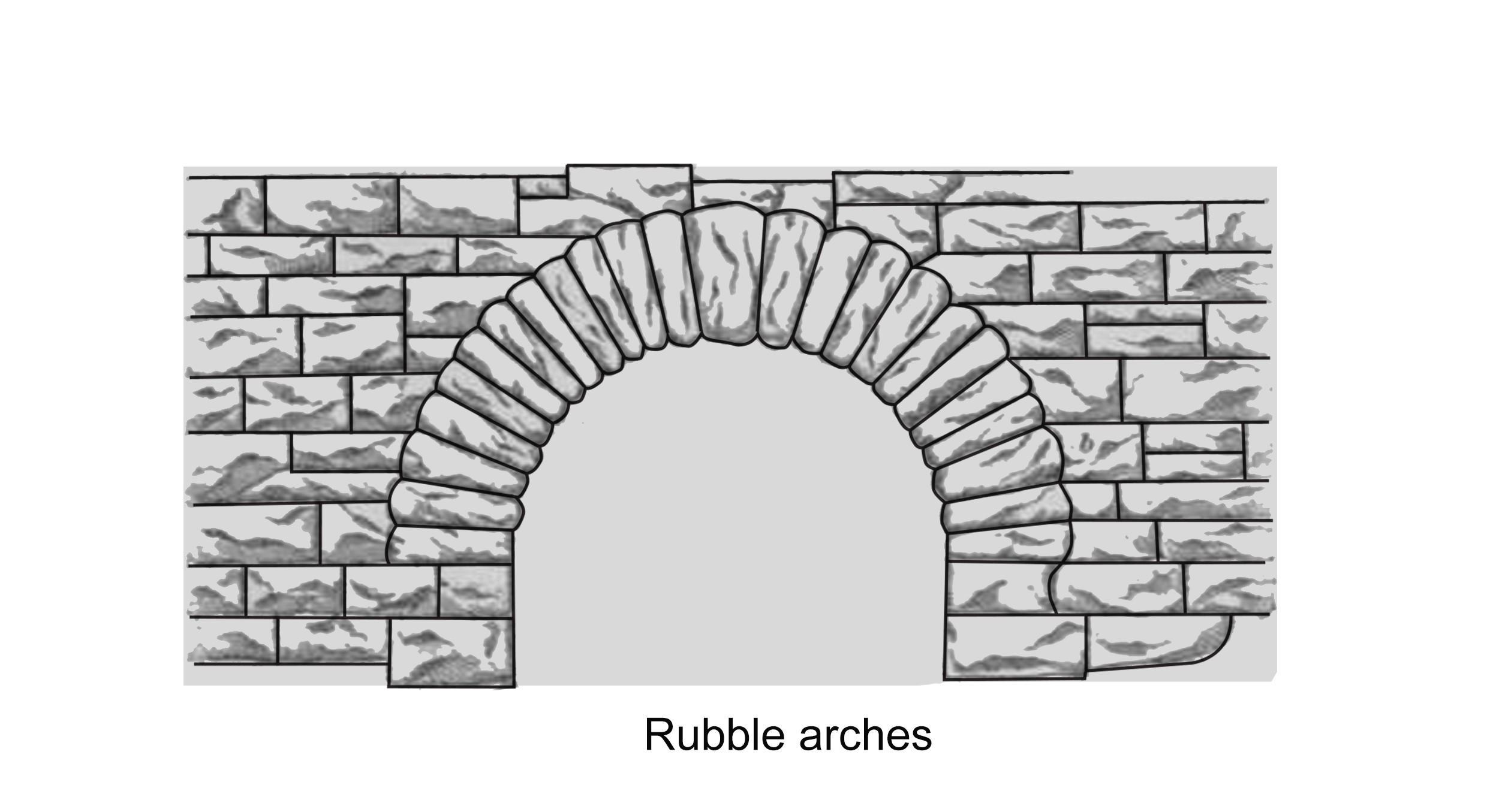
Ashlar Arches
- Stones are cut to the proper shape of voussoirs and are fully dressed, properly joint with cement or lime.
- The voussoirs are made of the full thickness of the arch.
- Depth is 600 mm (24 inches).
- Ashlar stones are also used to make flat arches.
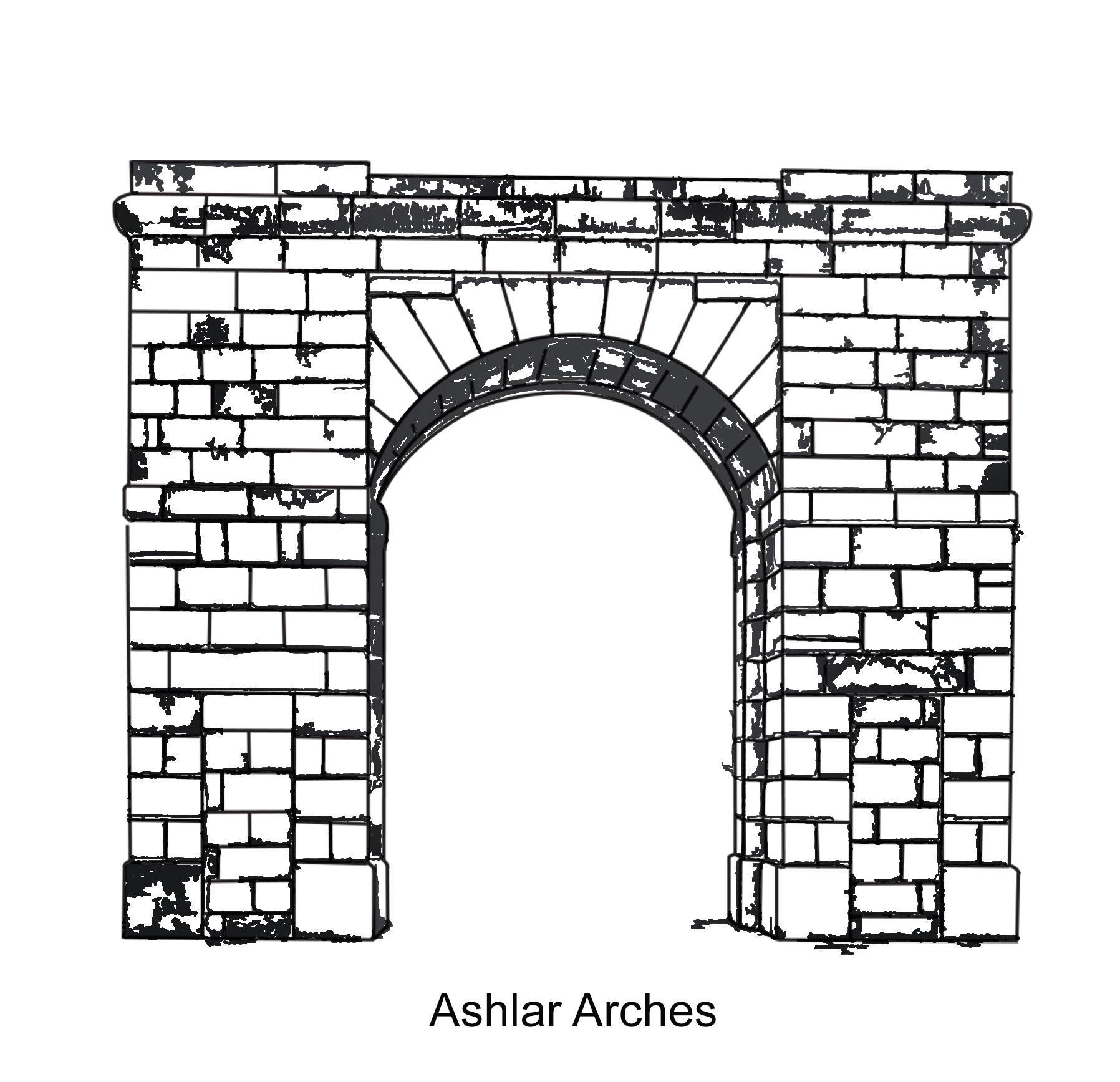
Brick Arches
Rough brick arches
- These arches are built with ordinary bricks, which are not in wedge shape .
- Also known as “RELIEVING ARCHES”.
- Made up of rectangular brick that is not cut into a wedge shape.
- Curvature is obtained by mortar.
- The arch curve is provided by forming wedge-shaped joints with greater thickness at extrados and smaller thickness at intrados. That’s why it looks unattractive. Therefore not recommended for exposed brickworks.

Axed brick arches
- Bricks are cut to wedge shape.
- Joints of arches are of uniform thickness.
- Not dress finely so it does not give much attractive appearance.

Purpose made brick arches
The bricks are manufactured, matching the exact shape and size of voussoirs, to get very fine workmanship.

Concrete Arches
Precast concrete block arches
- In Precast concrete block arches the blocks are cast in moulds to the exact shape and size of voussoirs.
- For keystone and skewbacks special moulds are prepared. These will give a good appearance because of the exact shape and size.
- Cement concrete of 1:2:4 is used.
- Used for small openings in buildings.
- Generally, the concrete blocks are used without reinforcement.

Monolithic concrete block arches
- Constructed from cast-in-situ concrete, either plain or reinforced, depending upon the span and magnitude of loading.
- Monolithic concrete block arches are suitable for larger spans.
- Quit suitable for larger span of 3000 mm (10 Ft.).
- The curing is done in 2 to 4 weeks.
To download FREE CAD Blocks of different types of designer or simple arches, click here
*Note:- The dimensions written in Feet, inches, and mm are individual dimensions, not converted.




